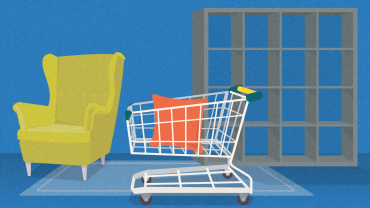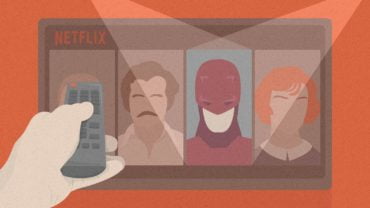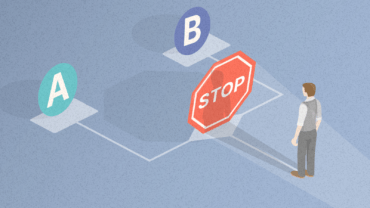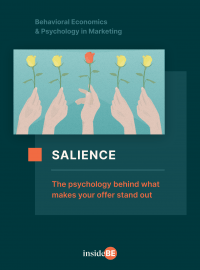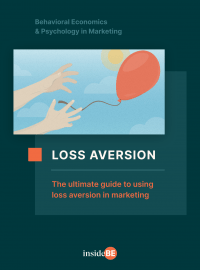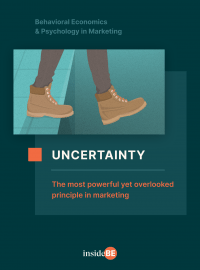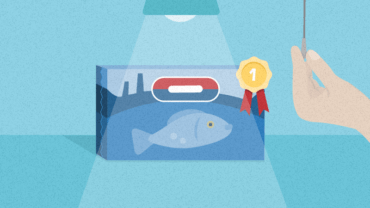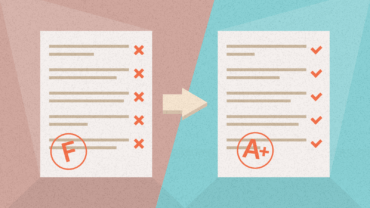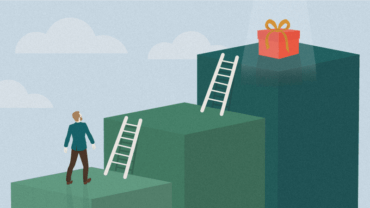Behavioral Consultant Radova: If You’re a Marketer, Context is Your Superweapon
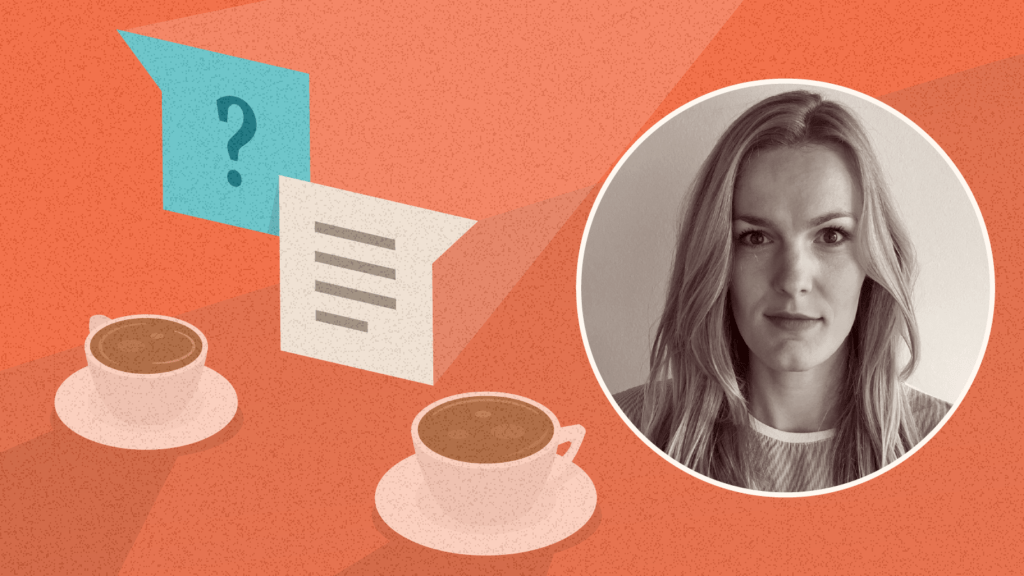
Why do some marketing techniques work so well? Why do they get people to act in a certain way? The answer’s simple: behavioral economics. MINDWORX’s Kristina Radova shares her love story with psychology, the surprising results of using behavioral principles, and some hands-on tips.
In this interview, you’ll learn:
- How MINDWORX helps its clients solve marketing, sales, and HR problems;
- How principles from behavioral economics can help you persuade consumers;
- Why it’s important to look at barriers that stop your customers from deciding; and
- The importance of context in decision-making, with real-life stories and cases.
Kristina, let’s start with your story. What drew you into working in the field of behavioral economics and psychology?
I’ve always been drawn to psychology and I majored in it at university. In fact, it runs like a thread through my whole journey. My first job was in HR where understanding people was the bread and butter of my daily work.
After that, I landed a job with IKEA working in visual merchandising. Fancy as that sounds, the truth is that IKEA uses heaps of psychological principles to design its stores. For example, the market hall design seduces people into impulsive buying. We never talked about these principles at work but I recognized them. It fascinated me.
But the actual work wasn’t as much about psychology as it was about rolling up my sleeves and drilling holes into walls. One afternoon, I hung up 20 mirrors in only one hour. I’m telling you, I can do anything. (laughter)
Wow, that’s pretty hands-on. How did you go from drilling in IKEA showrooms to working with MINDWORX?
It was all down to serendipity. While I was browsing on YouTube, I saw a video by Matej Sucha, MINDWORX’s founder. His talk on behavioral economics totally enchanted me. So much so that I watched it twice. (smile)
In the end, he said: “We’re looking for new team members. If you’re not a complete rookie, hit me up.” So I did. That was three years ago and I’ve never looked back.
My role at MINDWORX has two aspects. I’m a Behavioral Consultant, so I work on my own projects. I’m also the Chief Copywriter, and in charge of all our content.
What I find really helpful in consulting is that my experience in HR and working at IKEA gave me a deep understanding of the client-side and how much more efficient you can become with behavioral science.

Discover ground-breaking ideas and fascinating solutions.
That’s a great story. So what does MINDWORX actually do?
Here’s my shortest elevator pitch ever: We advise companies on what to say, and how to say it to achieve their goals in marketing, sales, and HR.
We advise companies on what to say, and how to say it to achieve their goals in marketing, sales, and HR.
We look at the psychological drivers or principles which affect people’s decisions without them even being aware of them. Then we turn them into communication that influences their behavior.
You mentioned psychological drivers that influence decisions. What are these principles based on?
Imagine your average day. You have thousands of decisions to make. From what to wear to what to have for dinner and when to go to sleep. It takes a lot of brainpower.
To conserve energy, evolution has taught us to be economical about how we spend it. When we’re deciding, our brain uses heuristics – mental shortcuts that drive our behavior. They help you make decisions faster, so you don’t spend too much time deliberating.
Let’s say you come to a website for the first time to buy something you’ve never bought and don’t know much about, like a washing machine. First, you look at the most popular products. Who’s got hours to spend on research when you have a Netflix show to catch up on? Other people must already know better, right?
After checking out a few, you buy one. You’re happy with this totally rational choice. You don’t even realize you’ve been swayed by the workings of social proof. This explains that when people don’t know what to do, they follow the actions of the majority, perceiving it as the correct behavior. Especially if the people you look up to are like you or they’re in a similar situation.
We like to make up stories to explain how we behave and don’t realize how irrational we often are. Or how much other people’s decisions influence us. In fact, 95% of our decisions are subconscious. Most of them are emotional.
But these decisions are very much context-dependent. If you’re a marketer, context is your superweapon. People constantly compare things and are not aware of them.
Decisions are very much context-dependent. If you’re a marketer, context is your superweapon.
Can you give an example of this context-dependency?
Imagine you’re shopping for a new dress that costs $200. You find a gorgeous gown that you want to buy. And as luck would have it, your well-informed friend tells you to go to the other side of town to get the same dress for $100, with a 50% discount. Would you go?
Most people would say yes.
Now, imagine that you’re buying a car that costs $10,000. And then you learn that on the other side of town you can buy the same car for $9,900. Would you go? Most people wouldn’t.
What we do at MINDWORX is analyze that context and create an environment that helps people make a decision.
That’s because the context matters. It’s the same $100. But it feels different when you have to pay $10,000 compared to $200. And what we do at MINDWORX is analyze that context and create an environment that helps people make a decision.
What sort of questions do your clients come to you with?
There are three main areas in which we help our clients with marketing, sales, and HR.
Everyone wants to know how to boost their sales and conversions. Or how to hire candidates, frame job proposals, and conduct interviews.
Other questions we sometimes get are about changing employees’ habits and behavior to make them healthier, more productive, and satisfied with their jobs.
One of our clients, a huge American company, was looking into what was driving job satisfaction and how they could keep employees from leaving after three years. In this case, we researched what was causing friction that was impacting their employees’ productivity and overall happiness with their work.
How would you go about a project like this? In other words, how do you create the context that drives the right decisions?
When you try to sell a product, the traditional approach focuses on motivation. How do I motivate people to buy this product? What benefits should I broadcast?
Our approach is slightly reversed.
For us, the first and most important step is to identify the barriers that prevent people from doing something. When you want to change someone’s mind, you’re thinking: what can I say so that they would understand me?
Instead, you should ask: What’s stopping them from taking that step?
For us, the first and most important step is to identify the barriers that prevent people from doing something.
Without understanding the barriers that are keeping people from clicking on that ‘buy now’ button, making a design change and hoping for the best might not get you very far. That’s why it’s key to look at the broader picture. Analyzing the decision-making context at each customer touchpoint might uncover surprising insights.
When consumers are failing at something, the reason is not always a lack of motivation. Instead, they might not have enough information or tools.
To get to the bottom of this, we ask three main questions:
- Do people have the opportunity to take the desired action?
- Do they have enough information and the means to do so?
- Do they have questions or uncertainties which prevent them from doing so?
Your approach sounds pretty thorough. Of all the projects you’ve worked on, which one was the most exciting for you?
The most exciting for me is actually one I’m working on right now, a project with a major bank. Their big question was: How can we convince people that saving is a good thing and that they should do it?
Their aim is to make their most vulnerable clients less vulnerable by creating a safety net in case something happens. They want to design a communication funnel to get people to open savings accounts and then create an automatic payment.
I like our agile approach in this project. We design something, test it, and move along. It’s like taking small chunks rather than eating the whole cake with one bite.
Companies are often afraid that working with a consultancy means that they will bring robust, expensive solutions. But the changes can be simple.
To create the communications, there were many unknowns: When is it a good time to message them? Should it be based on a trigger, like an increase in salary or a new job? And how do we personalize the experience?
In such cases, we try to encourage the company to turn the tables. So, instead of looking only at incentives, we also looked at motivations and what was preventing people from saving.
And how about the most challenging project? Was there a time when you broke out in a sweat?
My most challenging project is actually also a recent one. It’s a project with a realtor.
Normally, we would observe customers in the shopping center, run a survey, and watch how people behave around our client’s stand. Then, we would analyze what customers look at, find the hot and cold spots, and design the product layout.
Now, the project is at a standstill due to the pandemic. As the shopping centers are closed down, we have not been able to finalize our research and gather the data we need. Despite that, we have been able to create some workarounds in the meantime.
My team briefed a studio that will design stands and holders for our client’s products on how these should look. Even though we were still not sure about the final layout – the so-called choice architecture – we created something that was modular and could accommodate specific ideas coming out of the research once it’s finished.
So, it was not that tricky from a behavioral standpoint. It was more about managing expectations and reassuring the client, while also making sure we provided value.
What are your favorite principles that you use in your work?
One of my favorite concepts is the endowment effect. It means that once you own something, even if that’s just a feeling in your mind, you value it more than its objective value. As a result, you’ll be less inclined to give it up.
One of my favorite concepts is the endowment effect. It means that once you own something, even if that’s just a feeling in your mind, you value it more than its objective value.
It’s part of a bigger principle that forms the basis of the whole of behavioral economics: loss aversion, the queen of our behavior, and the master of our emotions. In short, it makes us more sensitive to losses than we are motivated by gains.
So, if you focus on what your prospect isn’t doing and what this lack of action costs them, that’s more effective than saying they can do something better.
Can you give us an example of this endowment effect?
Here’s an example of a business that uses this principle really well. Warby Parker is an eyewear brand that sells online. As you can imagine, unless you’re a photoshop virtuoso, it’s hard to know which frames to pick without trying them on.
Uncertainty
Uncertainty is a situation when your customer has incomplete or missing information. A situation when their questions, concerns, and fears aren’t answered.
There are many uncertainties. Will I look as cool as Audrey Hepburn? Will it give me the Tom Cruise swagger of good ol’ Top Gun? You get the point. Warby Parker gets it, too. They have a super clever way around this. They send you up to five frames, for free and with free returns. You pick your top frames. They come all the way to the context (and comfort) of your home.
You try on the first pair: Love ‘em. Try on the second: That’s totally me. You think of different occasions. Put on that pretty summer dress, or your favorite shirt. Try on the third pair: Score. I’m keeping these. Suddenly, you realize that instead of keeping just a single pair, you’ll keep two and send back three.
That’s the endowment effect done exceptionally well. You don’t own it yet but you value it more already. You don’t want to let them go.
How important is it for businesses to understand these behavioral economics and psychology principles?
Anyone who designs communication should be aware of them. There are some principles that have become quite popular, such as social proof. Or, to create urgency, marketers often use time constraints: You have only 24 hours to buy this.
But then, people are less aware of other valuable principles, such as the decoy effect. It explains that people tend to change their preference when choosing between two options once they are presented with a third – the decoy – priced to make one of the options look more attractive.
Or idiosyncratic fit – in short, when we feel like an offer or incentive ‘fits’ us better than others, or that it’s easier for us to meet the requirements, we’re more likely to act on it. It’s more attractive and more salient.
Often, people may not know the psychology behind it but they use this trick as they know it works.
Increasingly, companies are recognizing the importance of these principles. They know that behavioral economics and consumer psychology are really useful tools that offer a different way of thinking about common business problems.
Some companies ask us for training to help them learn how to use these principles and figure out solutions for themselves. We’re also helping one big telecommunications company to build a behavioral team.
What do you do to keep on top of the trends and learn about new concepts and principles in behavioral economics and psychology?
I love podcasts. My favorite is Behavioral Grooves. The two hosts interview experts from different walks of life each week and then comment on the interview. That part is often even more interesting than the interview itself.
I also like the Think Fast, Talk Smart podcast. Matt Abrahams, a strategic communication lecturer at Stanford, talks to experts about anything from public speaking anxiety to nailing a Q&A. It’s usually super practical advice.
The Happiness Lab podcast is awesome. It examines the latest scientific research on happiness. You got me – I’m a bit of a podcast geek. (laughter)
All these are sources on behavioral economics, and they may not even be aware of it. Once you know the key principles, these are stellar sources of inspiration. If you’re thinking, I can’t really commit, it’s way too heavy, these are perfect for you.
And here’s the cherry on the top. The best book I know on how to eliminate barriers to change is The Catalyst by Jonah Berger. It’s easy to read, not too theoretical, and it includes great examples.
